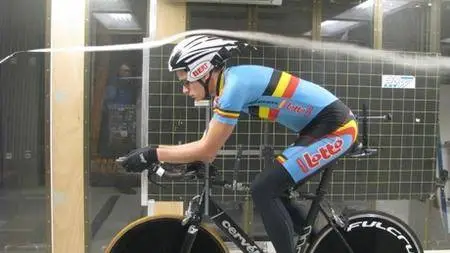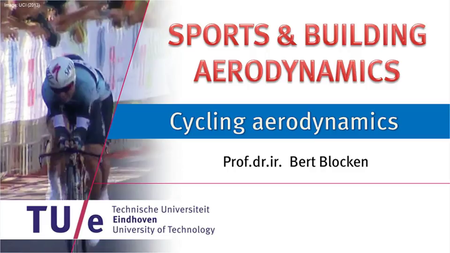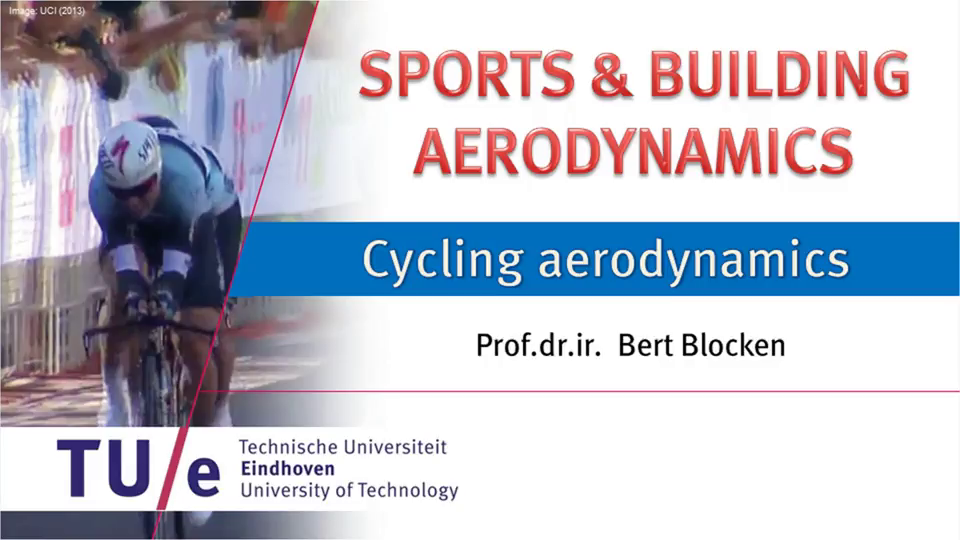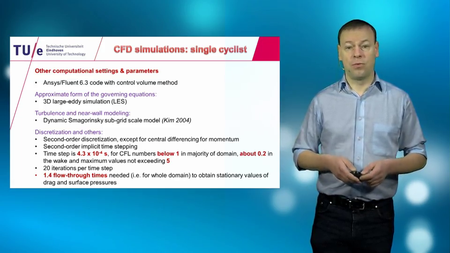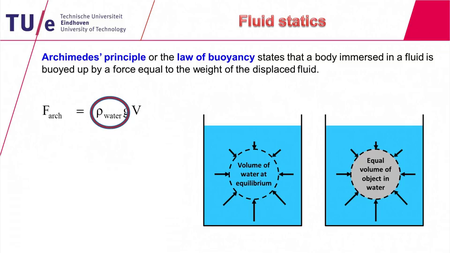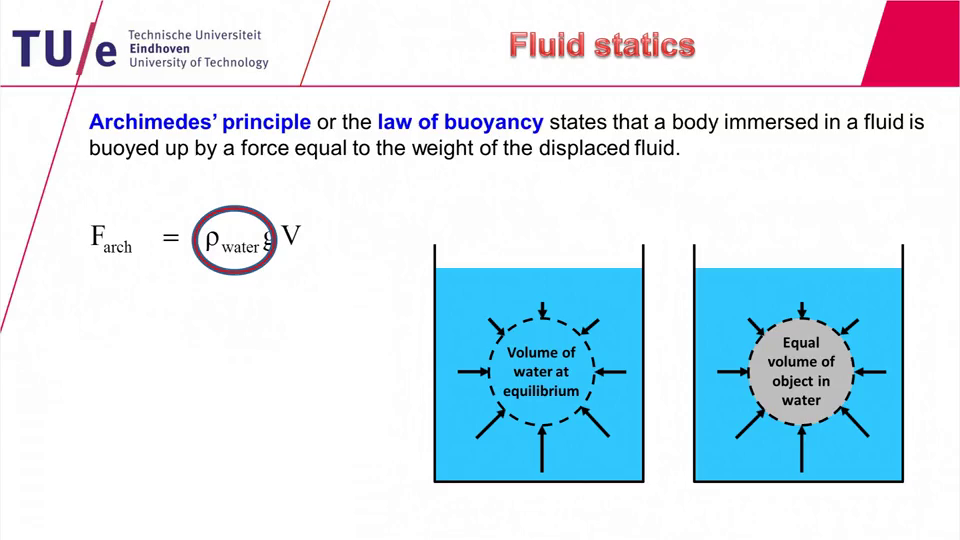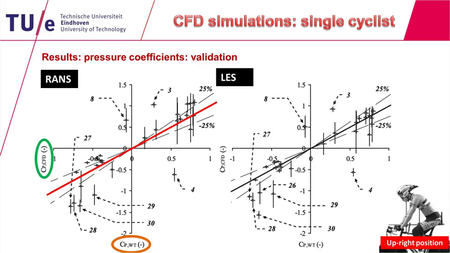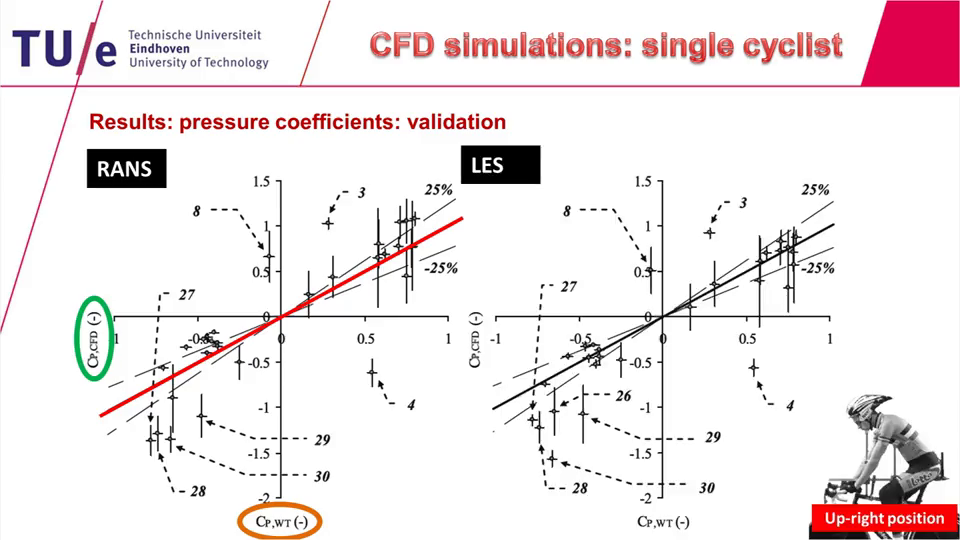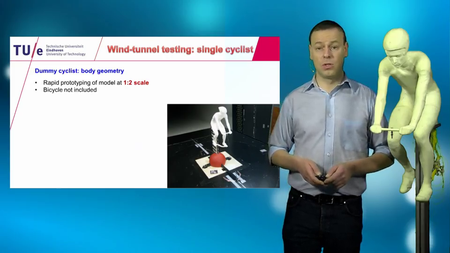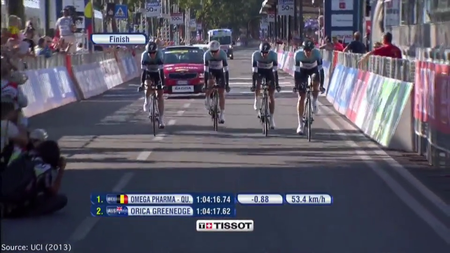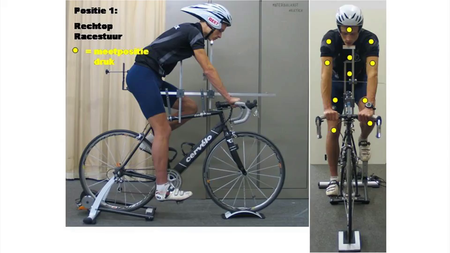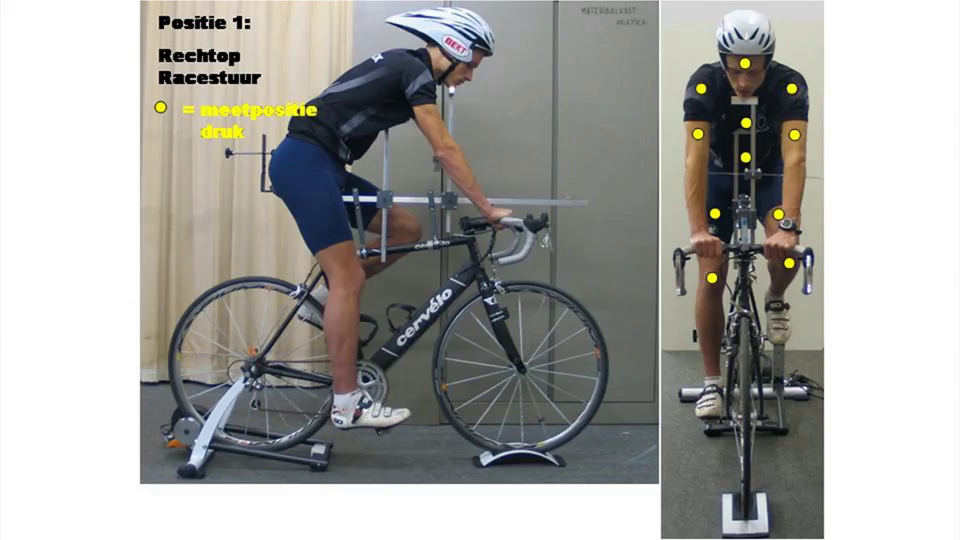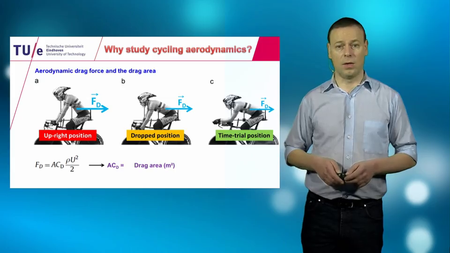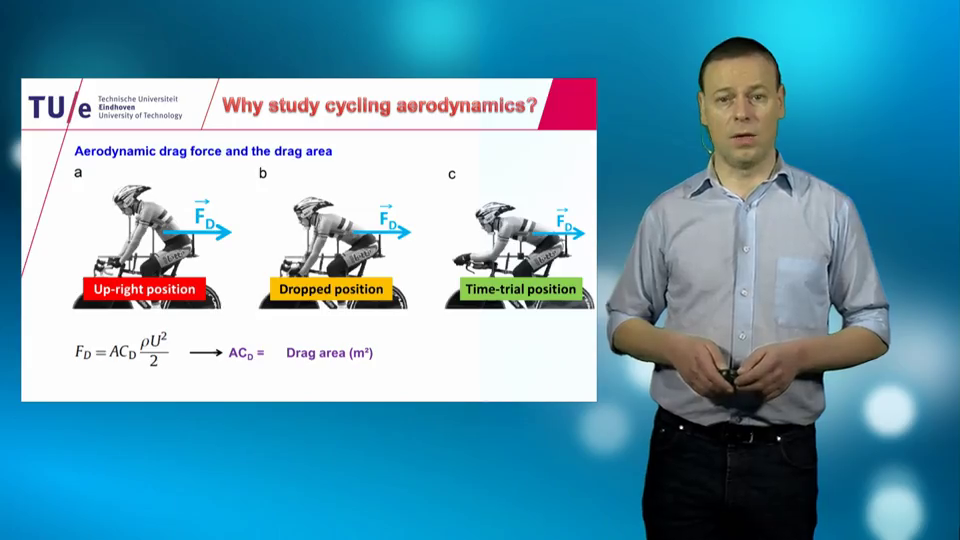Coursera - Sports and Building Aerodynamics
Eindhoven University of Technology with Bert Blocken
WEBRip | English | MP4 + PDF Guides | 960 x 540 | AVC ~162 kbps | 29.970 fps
AAC | 125 Kbps | 44.1 KHz | 2 channels | Subs: English (.srt) | 08:58:49 | 1.32 GB
Genre: eLearning Video / Mechanical Engineering, Sport
Eindhoven University of Technology with Bert Blocken
WEBRip | English | MP4 + PDF Guides | 960 x 540 | AVC ~162 kbps | 29.970 fps
AAC | 125 Kbps | 44.1 KHz | 2 channels | Subs: English (.srt) | 08:58:49 | 1.32 GB
Genre: eLearning Video / Mechanical Engineering, Sport
Can the present outstanding records in cycling team time trials be further improved? Can the present world and Olympic records in athletics disciplines such as the 100 m sprint be advanced? This course provides the answer to these questions. It shows that aerodynamic processes in sports and around buildings are very complex and that many misconceptions exist. These misconceptions are caused by the often counter-intuitive flow physics. Interestingly, the same counter-intuitive flow physics govern the misconceptions in both sports and building aerodynamics. The insights from this course will help you to understand and improve the performance of top athletes and of modern building design.In 2013, team Orica-Green Edge set the fastest-ever average speed for a Tour de France team time trial, with 57.8 km/h over a distance of 25 km, beating team Omega-Pharma Quick-Step by a mere 0.75 s. At the subsequent 2013 UCI Road World Championships, the latter team beat the former by only 0.88 s. Clearly, even minor aerodynamic improvements can be decisive in these prestigious races. And, surprisingly, up to now, the optimum aerodynamic setting for a team time trial has not yet been explored.
Records in athletics races such as the 100 m sprint, the 110 m hurdles and the long jump are only validated by the IAAF (International Association of Athletics Federations) when the tail wind does not exceed 2 m/s. Most world and Olympic records have been established at tail winds close to 2 m/s. Clearly, local aerodynamic effects can be decisive in establishing new records. Also here, the optimum aerodynamic setting has not yet been explored.
New and prestigious building projects are realized in different parts of the world. Some of them feature the integration of wind energy systems in the building design. Also here, aerodynamic misconceptions can lead to suboptimal performance.
The course starts with a brief recapitulation of the basic aspects of fluid flow: statics, kinematics, dynamics, flow regimes and boundary layers, including the atmospheric boundary layer in which sports and building aerodynamics take place. Next, the main aspects of the aerodynamic analysis techniques of wind tunnel testing and Computational Fluid Dynamics (CFD) simulations are outlined. Tips and tricks for wind tunnel testing and CFD simulations are given. This knowledge provides the basis for the course parts on building aerodynamics, 100 m sprint aerodynamics and cycling aerodynamics, where some surprising and sometimes spectacular results will be shown.
Syllabus
This is a six-week course with the following contents:
Week 1: Basic aspects of fluid flow
Fluid properties - part 1 (velocity, pressure, temperature)
Fluid properties - part 2 (density)
Fluid properties - part 3 (viscosity)
Flow properties - part 1
Flow properties - part 2
Fluid statics, kinematics, dynamics
Boundary layers - part 1
Boundary layers - part 2
Boundary layers - part 3
The atmospheric boundary layer
Week 2: Wind-tunnel testing
Why wind-tunnel testing?
Wind-tunnel types and applications
The atmospheric boundary layer wind tunnel
Wind-tunnel components
Measurements and flow visualization
Similarity and flow quality
Best practice guidelines
Week 3: Computational Fluid Dynamics
Computational Fluid Dynamics: what, why and how?
Approximate forms of the Navier-Stokes equations
Turbulence modeling
Some aspects of discretization
Near-wall modeling
Errors and uncertainty, verification and validation
Best practice guidelines
Computational Wind Engineering – Part 1
Computational Wind Engineering – Part 2
Week 4: Building aerodynamics
Wind flow around buildings – part 1
Wind flow around buildings – part 2
Pedestrian-level wind conditions around buildings – part 1
Pedestrian-level wind conditions around buildings – part 2
Pedestrian-level wind conditions around buildings – part 3
Natural ventilation of buildings
Wind-driven rain on building facades – part 1
Wind-driven rain on building facades – part 2
Wind energy in the built environment – part 1
Wind energy in the built environment – part 2
Week 5: 100 m sprint aerodynamics
Why study sprint aerodynamics?
Mathematical-physical model of running
Wind effects
Altitude effects
Stadium aerodynamics and sprint records
Interview with a professional athletics coach
Week 6: Cycling aerodynamics
Why study cycling aerodynamics?
Wind-tunnel testing for a single cyclist – Part 1
Wind-tunnel testing for a single cyclist – Part 2
CFD simulations for a single cyclist
Aerodynamics of two drafting cyclists
Aerodynamics of drafting cyclist groups
Aerodynamics of car-cyclist combinations
Interview with professional cycling coaches from teams Belkin and RaboLiv
also You can watch my other last: Coursera-posts
General
Complete name : 06_6.6-_Aerodynamics_of_drafting_cyclist_groups.mp4
Format : MPEG-4
Format profile : Base Media
Codec ID : isom
File size : 21.7 MiB
Duration : 10mn 14s
Overall bit rate mode : Variable
Overall bit rate : 296 Kbps
Writing application : Lavf55.10.100
Video
ID : 1
Format : AVC
Format/Info : Advanced Video Codec
Format profile : Main@L3.1
Format settings, CABAC : Yes
Format settings, ReFrames : 4 frames
Codec ID : avc1
Codec ID/Info : Advanced Video Coding
Duration : 10mn 14s
Bit rate : 162 Kbps
Width : 960 pixels
Height : 540 pixels
Display aspect ratio : 16:9
Frame rate mode : Constant
Frame rate : 29.970 fps
Color space : YUV
Chroma subsampling : 4:2:0
Bit depth : 8 bits
Scan type : Progressive
Bits/(Pixel*Frame) : 0.010
Stream size : 11.9 MiB (55%)
Writing library : x264 core 129 r2230 1cffe9f
Encoding settings : cabac=1 / ref=3 / deblock=1:0:0 / analyse=0x1:0x111 / me=hex / subme=7 / psy=1 / psy_rd=1.00:0.00 / mixed_ref=1 / me_range=16 / chroma_me=1 / trellis=1 / 8x8dct=0 / cqm=0 / deadzone=21,11 / fast_pskip=1 / chroma_qp_offset=-2 / threads=12 / lookahead_threads=2 / sliced_threads=0 / nr=0 / decimate=1 / interlaced=0 / bluray_compat=0 / constrained_intra=0 / bframes=3 / b_pyramid=2 / b_adapt=1 / b_bias=0 / direct=1 / weightb=1 / open_gop=0 / weightp=2 / keyint=250 / keyint_min=25 / scenecut=40 / intra_refresh=0 / rc_lookahead=40 / rc=crf / mbtree=1 / crf=28.0 / qcomp=0.60 / qpmin=0 / qpmax=69 / qpstep=4 / ip_ratio=1.40 / aq=1:1.00
Language : English
Audio
ID : 2
Format : AAC
Format/Info : Advanced Audio Codec
Format profile : LC
Codec ID : 40
Duration : 10mn 14s
Bit rate mode : Variable
Bit rate : 125 Kbps
Maximum bit rate : 128 Kbps
Channel(s) : 2 channels
Channel positions : Front: L R
Sampling rate : 44.1 KHz
Compression mode : Lossy
Stream size : 9.16 MiB (42%)
Language : English
Complete name : 06_6.6-_Aerodynamics_of_drafting_cyclist_groups.mp4
Format : MPEG-4
Format profile : Base Media
Codec ID : isom
File size : 21.7 MiB
Duration : 10mn 14s
Overall bit rate mode : Variable
Overall bit rate : 296 Kbps
Writing application : Lavf55.10.100
Video
ID : 1
Format : AVC
Format/Info : Advanced Video Codec
Format profile : Main@L3.1
Format settings, CABAC : Yes
Format settings, ReFrames : 4 frames
Codec ID : avc1
Codec ID/Info : Advanced Video Coding
Duration : 10mn 14s
Bit rate : 162 Kbps
Width : 960 pixels
Height : 540 pixels
Display aspect ratio : 16:9
Frame rate mode : Constant
Frame rate : 29.970 fps
Color space : YUV
Chroma subsampling : 4:2:0
Bit depth : 8 bits
Scan type : Progressive
Bits/(Pixel*Frame) : 0.010
Stream size : 11.9 MiB (55%)
Writing library : x264 core 129 r2230 1cffe9f
Encoding settings : cabac=1 / ref=3 / deblock=1:0:0 / analyse=0x1:0x111 / me=hex / subme=7 / psy=1 / psy_rd=1.00:0.00 / mixed_ref=1 / me_range=16 / chroma_me=1 / trellis=1 / 8x8dct=0 / cqm=0 / deadzone=21,11 / fast_pskip=1 / chroma_qp_offset=-2 / threads=12 / lookahead_threads=2 / sliced_threads=0 / nr=0 / decimate=1 / interlaced=0 / bluray_compat=0 / constrained_intra=0 / bframes=3 / b_pyramid=2 / b_adapt=1 / b_bias=0 / direct=1 / weightb=1 / open_gop=0 / weightp=2 / keyint=250 / keyint_min=25 / scenecut=40 / intra_refresh=0 / rc_lookahead=40 / rc=crf / mbtree=1 / crf=28.0 / qcomp=0.60 / qpmin=0 / qpmax=69 / qpstep=4 / ip_ratio=1.40 / aq=1:1.00
Language : English
Audio
ID : 2
Format : AAC
Format/Info : Advanced Audio Codec
Format profile : LC
Codec ID : 40
Duration : 10mn 14s
Bit rate mode : Variable
Bit rate : 125 Kbps
Maximum bit rate : 128 Kbps
Channel(s) : 2 channels
Channel positions : Front: L R
Sampling rate : 44.1 KHz
Compression mode : Lossy
Stream size : 9.16 MiB (42%)
Language : English
Screenshots
Exclusive eLearning Videos ParRus-blog ← add to bookmarks


